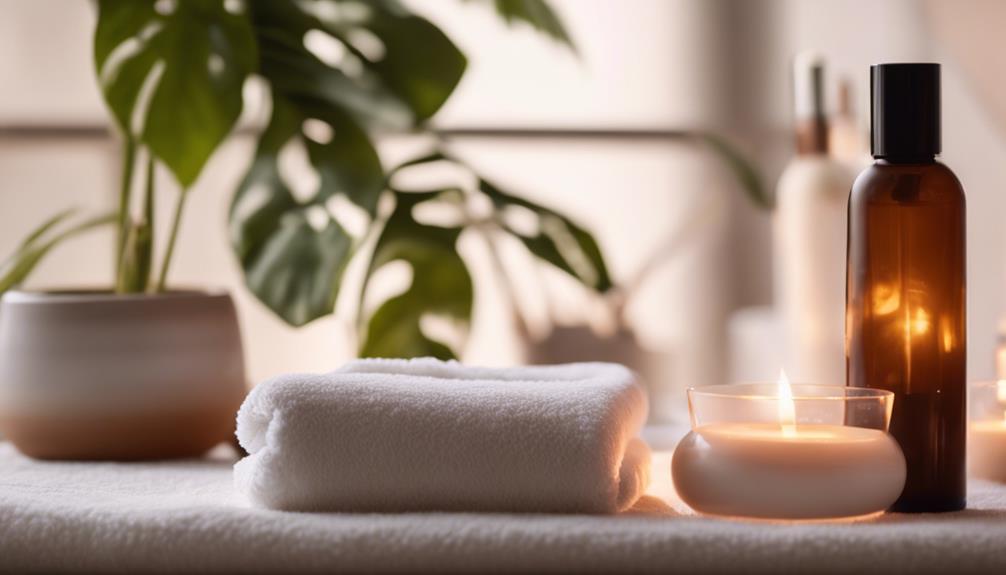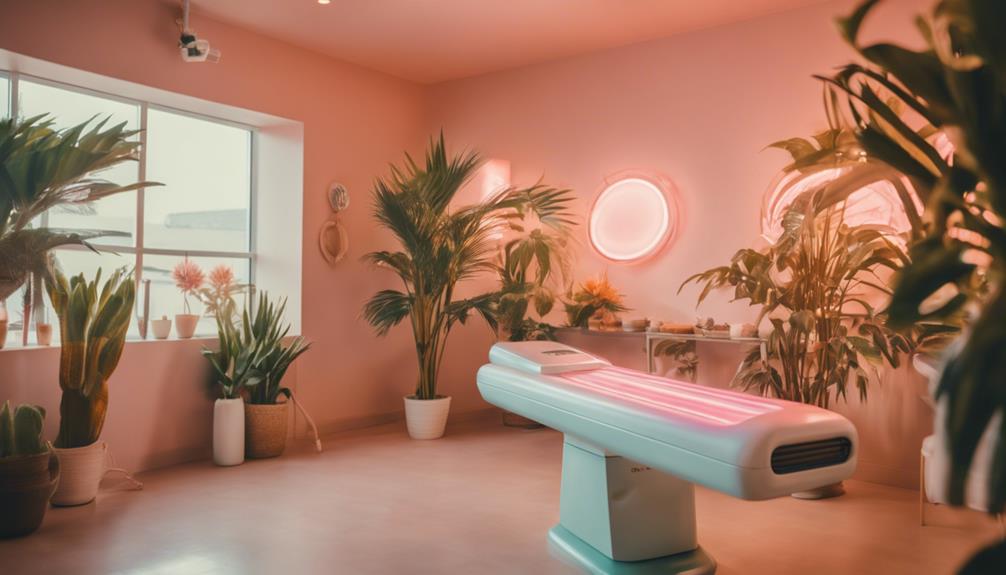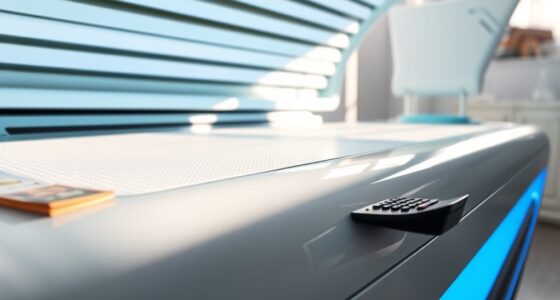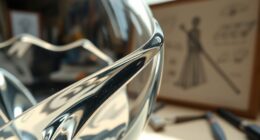Governments ban some tanning beds because their UV radiation can cause serious health problems like skin cancer and premature aging. The risks are especially high for minors and those who use these devices excessively. Regulations often target these dangers by banning certain types or restricting access to protect public health. If you want to understand more about why these bans exist and how they keep people safe, keep exploring the details behind these regulations.
Key Takeaways
- To reduce health risks like skin cancer and premature aging caused by UV radiation exposure.
- Because certain devices emit stronger UV rays than natural sunlight, increasing health dangers.
- Due to scientific evidence linking artificial tanning to higher melanoma risk.
- To protect minors and vulnerable populations from harmful UV exposure.
- As part of regulations promoting safer alternatives and public awareness of tanning hazards.

Have you ever wondered how tanning beds impact your health? The answer is complex and has led many governments to ban certain types of tanning equipment. One of the main reasons is the risks associated with ultraviolet (UV) radiation exposure, which can cause skin damage, premature aging, and increase the likelihood of skin cancer. As a result, stricter skincare policies and health regulation have been put into place to protect consumers, especially minors. Many countries recognize that tanning beds emit UV rays comparable to, or even stronger than, the midday sun, which can be harmful when used improperly or excessively. These health concerns have prompted regulatory agencies to scrutinize the safety of tanning devices and, in some cases, prohibit their use altogether. Utilizing AI content clusters to optimize health messaging can help public health campaigns effectively communicate these dangers and promote safer alternatives.
Governments have relied on health regulation to establish guidelines that limit UV exposure from tanning beds. For example, some jurisdictions ban the sale and use of indoor tanning beds for minors, citing evidence that young skin is particularly vulnerable to UV damage. Others have imposed restrictions on the types of equipment allowed, requiring devices to meet specific safety standards and include features like timers and protective eyewear. Despite these measures, many health authorities argue that even regulated tanning beds pose significant health risks, leading to outright bans in certain regions. These bans are supported by an increasing body of scientific research linking artificial tanning to increased melanoma risk, the deadliest form of skin cancer. The idea is to prevent long-term health consequences that can be devastating and costly to treat.
The implementation of skincare policies and health regulation isn’t just about restricting access; it’s about raising awareness and encouraging safer alternatives. Many health agencies promote the use of self-tanning products or sunless options, which provide a bronze glow without UV exposure. These alternatives align with the broader goal of reducing skin cancer rates while still allowing people to enjoy a tanned appearance. Governments also use bans as a way to send a clear message about the dangers of UV radiation, hoping to change public attitudes and behaviors around tanning. Ultimately, these regulations reflect a commitment to public health and the recognition that the risks of tanning beds often outweigh any perceived cosmetic benefits. While some may see bans as restrictive, they are rooted in a precautionary approach designed to keep people safe from preventable health issues caused by tanning practices.
Frequently Asked Questions
Are There Safe Alternatives to Tanning Beds?
Yes, there are safe alternatives to tanning beds. You can try sunless tanning products like lotions, sprays, or mousses for a natural-looking glow. These alternatives promote tanning bed safety and avoid UV exposure, reducing skin damage risk. Additionally, some prefer outdoor sun exposure with proper protection or use UV-free tanning devices. Always choose reputable products and follow instructions for the best results and skin health.
How Do Tanning Beds Increase Skin Cancer Risk?
Tanning beds are like sneaky thieves, quietly increasing your skin damage and cancer risk. The ultraviolet (UV) rays they emit damage your skin cells’ DNA, making mutations more likely. Over time, this damage accumulates, heightening your chance of skin cancer, including melanoma. Using tanning beds subjects you to concentrated UV exposure, which accelerates this process, turning your skin into a battleground where cancer can find a foothold.
What Are the Legal Ages for Tanning Bed Use?
You need to be at least 18 years old to use tanning beds in many places, following age restrictions and legal regulations. Some regions set the minimum age lower, like 16, but most prioritize safety by limiting access for minors. Always check local laws before you tan, because age restrictions vary by state or country. Ignoring these regulations can lead to penalties or health risks, so stay informed and responsible.
Do Tanning Beds Emit Harmful UV Radiation?
Yes, tanning beds emit harmful UV radiation, which increases your risk of skin damage. When you use a tanning bed, you expose your skin to intense UV rays that can cause premature aging, sunburns, and even skin cancer. It’s important to understand that this UV exposure isn’t harmless, and frequent use can profoundly harm your skin health over time. Always consider safer alternatives to achieve a tan.
Can Tanning Beds Be Used for Vitamin D Production?
Yes, you can use tanning beds for vitamin D synthesis, but it’s not the safest method. UV exposure from tanning beds can help your body produce vitamin D, but overdoing it risks skin damage and health issues. To guarantee UV exposure safety, consider natural sunlight or supplements instead. Always consult a healthcare professional before using tanning beds for vitamin D, as safer options exist with fewer risks.
Conclusion
You might wonder if banning tanning beds truly protects you. The truth is, by avoiding these devices, you lower your skin cancer risk and prevent premature aging. It’s like trusting a proven safety measure rather than a risky shortcut. When governments ban them, they’re not just enforcing rules—they’re safeguarding your health. So, next time you think about tanning, remember that avoiding these beds isn’t just a choice, it’s a smart move for your long-term well-being.









